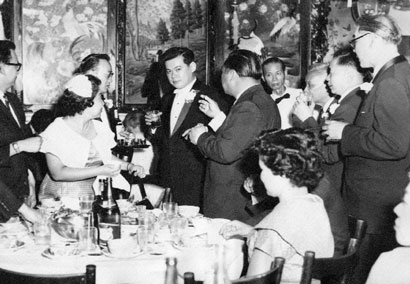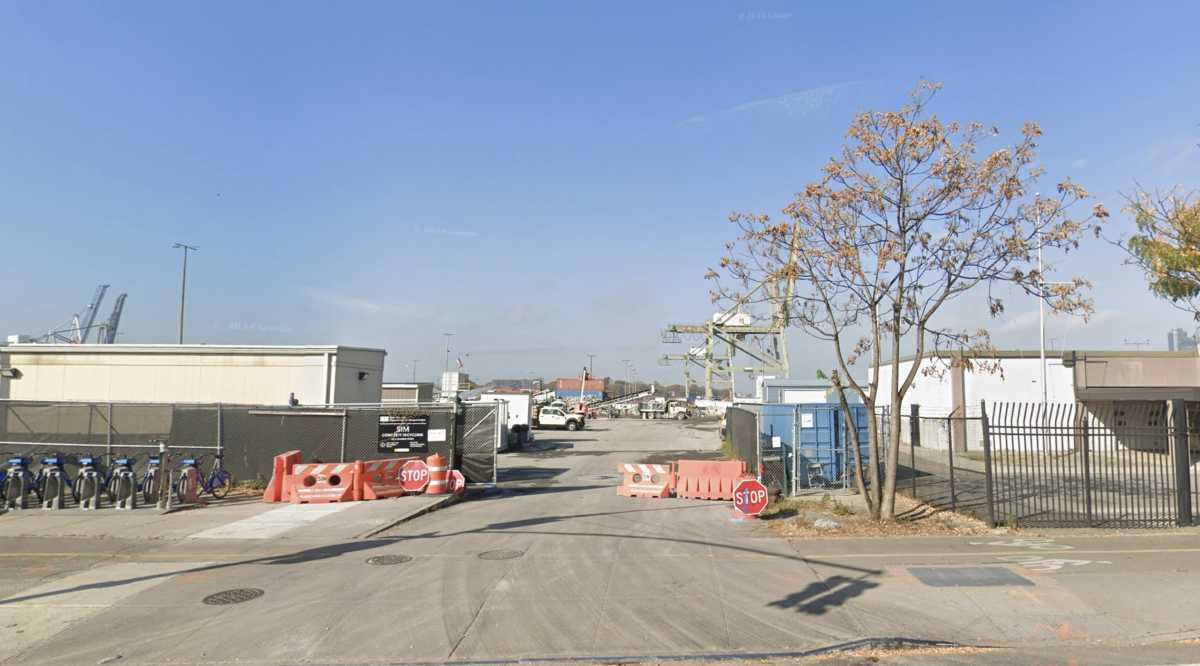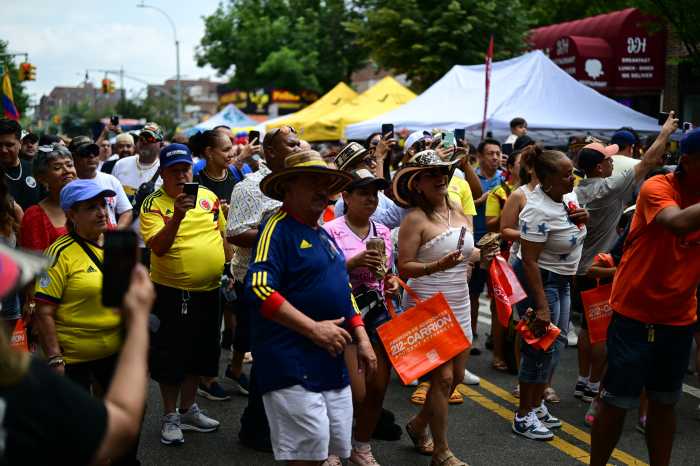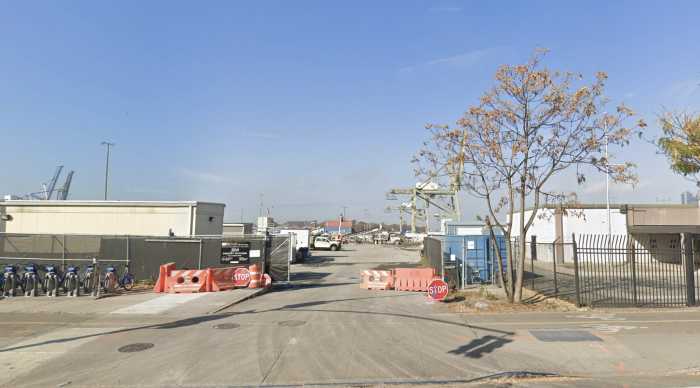By Hemmy So
Every New Yorker probably has one stashed in a spare kitchen drawer, stuck onto the refrigerator with a favorite magnet or still lying on the floor after being pushed under the apartment door: the Chinese take-out menu. How fitting then, that the Chinese menu provides a wealth of cultural insight into the history of Chinese restaurants in America at the Museum of Chinese in the America’s new exhibit, “Have You Eaten Yet?: The Chinese Restaurant in America.”
Quietly inhabiting the second floor of a century-old school building on a bustling Chinatown section of Mulberry St., the museum opened its installment on Sept. 14. Creatively utilizing a mere 500 square feet of space, the exhibit displays a collection (largely on loan from collector Harley Spiller) of vintage Chinese menus, old family photographs and other Chinese restaurant items.
The team behind the Have You Eaten Yet? certainly hopes the exhibit helps local businesses by drawing visitors to the neighborhood. In fact, Cynthia Lee, co-curator, said the project was created in response to the depressed economic conditions in Chinatown after 9/11. After seeing too many restaurant workers sitting outside on stoops while their eateries remained empty day after day and favorite restaurants closing on a weekly basis, the curators sought a way to help the neighborhood rebound. The curators thought what better way to entice visitors to dine at a Chinatown restaurant than having a museum exhibit about just that subject?
Aaron Eng-Achson, a second-grade English as a second language teacher in Chinatown’s P.S. 42, stopped by the exhibit while on his way to drop off archive material at the museum. He didn’t know about the particular exhibit in place but was impressed. “[The museum] is hitting on a particular theme and chose a side that people don’t see or think about. Restaurant workers in Chinatown are the backbone of the community,” he said. In fact, he wants to bring his students into the museum to experience a piece of New York community.
Another museum hopeful is Raymond Wong, general manager of Joe’s Shanghai and Joe’s Ginger restaurants in Chinatown. The simple green and white take-out menu for Chinatown staple Joe’s Shanghai sits in a display case at the museum, representing the current generation of Chinese restaurants. Indeed, a look at the menu and decor at Joe’s Ginger perhaps signifies the next wave of Chinese restaurant iconography: dark red, fabric hard-cover menus resembling fancy wedding invitations sitting on tables surrounded by simple white walls and nothing to indicate the cuisine served except Chinese tea cups and spoons.
The restaurant serves more authentic Chinese food but still carries old Americanized favorites like General Tso’s chicken. “I still need to keep some old-time customers,” Wong chuckled.
More than reciting a history of Chinese food in America, the exhibit traces the roots of an economic niche successfully captured by Chinese Americans. Carefully preserved Chinese menus, many from the 1940s and 1950s, fit into clear plastic cases attached to the wall by hinges, allowing visitors to see the fronts and backs of the menus.
A 1942 menu from King Joy Restaurant in Salt Lake City, Utah offered a highly Americanized selection of dishes, including breaded lamb chops with tomato sauce and roasted young tom turkey with cranberry sauce. A menu from Ching How Restaurant in North Hollywood, Cal. dating back to the late 1940s or 50s, kindly offers advice to the Chinese food novice: “Because many persons are unfamiliar with genuine Chinese food and sometimes find a menu confusing, we should like to suggest that you occasionally try leaving your dinner to the Chef.”
But the menus show more than just what Americans viewed as Chinese fare back in the day. In Washington D.C. during the 1940s, for example, The Lotus offered lunch and dinner along with “three brilliant Broadway revues daily.” The China Doll in New York City claimed the title of “New York’s Only All-Oriental Night Club.”
This variety of Chinese restaurants exemplifies the way in which Chinese entrepreneurs read their local markets, said Lee, the curator. Whether changing ingredients to fit certain tastes, creating a nightclub or dinner theater experience or even playing on American stereotypes of Chinese culture, Chinese restaurateurs adapted for success.
Success eventually made the Chinese restaurant an American pop culture icon — a notion Lee wanted to capture in the installation. “I didn’t want the exhibit to be the reproduction of a restaurant,” she explained. The graphic design team behind “Have You Eaten Yet?” Pei Hsieh and Stephanie Reyer, specifically strayed from traditional Chinese restaurant colors such as red and gold. Instead, they opted for white walls accented by tomato red patches of color and cornflower blue-hued icons co-opted from various objects on display.
Light blue placards on hinges also carry quotes and photos from those personally involved in the Chinese restaurant business. Black and white photographs portray a smiling father whipping up a quick meal in the family kitchen, a family huddled in front of their take-out joint during a blistering winter and a team of cooks looking up from their giant woks.
Memories fill the small museum in the form of short quotes such as the one from Nancy Yan, whose family owned the China Boy take-out restaurant in Baltimore: “In addition to the usual fried rice and egg foo young, our take-out offered fried chicken, crab cakes and fish-n-chips which, as kids, we had always wanted to eat but our mother would never let us because it [sic] we weren’t supposed to eat fried foods.”
This personalization of the exhibit doesn’t stop there. Museum visitors are encouraged to write their own memories of Chinese restaurant experiences in a blank book that is part of the installation.
“We tried to get a lot of personal, first-person voices,” Lee said. In fact, as Lee and her team were putting together the exhibit, the museum put out a call for family stories relating to Chinese restaurants using its newsletter, calendar, e-mail listserv and general word-of-mouth.
“I wanted to balance the exhibit with historical information and personal stories to give it a human dimension,” Lee said.
“Have You Eaten Yet?: The Chinese Restaurant in America,” on exhibit until June 2005 at the Museum of Chinese in the Americas, 70 Mulberry St., $1 – $3, Tuesday-Sunday, noon-6 p.m., free admission on Fridays, noon-7 p.m., 212-619-4785.
WWW Downtown Express

































